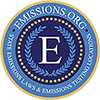Last updated on November 9th, 2017
When it comes to car insurance laws and policies the state of Alaska is a good deal different from most other states due to its unique environmental, geographical and socioeconomic characteristics. Perhaps one of the most unique aspects of the state’s car insurance law that sets it apart from the from other states is that while Alaska has a slew of laws concerning Alaska car insurance, and there are certain towns and regions in the state that are exempt from these requirements. These areas that are exempt from the state’s laws on car insurance are typically isolated from the outside world and have rather small populations, both of which can make minimum car insurance requirements an undue burden on the community. In addition to vehicles that are operated in the specified areas, vehicles that are designed to go off-road and vehicles that are non operational are not required to adhere to Alaska’s minimum car insurance requirements.
For those that are not exempt from Alaska’s laws governing car insurance a rather strict mandatory coverage limit must still be met in order to operate a vehicle legally. The state of Alaska requires that every vehicle be insured with at least $50,000 for injuries to a single person, $100,000 for injuries to multiple people and $25,000 for property damage; all three of which are designed to cover those that are not at fault in an accident. These amounts are higher than in any other state in part because Alaskan officials want to minimize the lawsuits that are a common result of accidents where the minimum insurance carried by the at-fault driver is not enough to cover the damages from the accident. If a driver has accrued more than 6 points on their license in a 5 year span they will be required to meet these limited liability insurance requirements established by the state of Alaska even if they live in an area that is normally exempt from such requirements. Like most other states Alaska also requires that the driver of a vehicle keep proof of insurance in the vehicle at all times. Failure to provide proof of insurance when it is requested by a police officer or an authorized representative of the Department of Public Safety could result in the vehicle being confiscated and impounded until such proof is provided and all fines have been paid. In addition to routine traffic stops proof of insurance is also required if a driver is involved in an accident that resulted in bodily injury, death or damage of property over $501. Alaska is also one of many states that will legally require a driver to carry full coverage on a vehicle that was purchased with a loan. In some states this is left up to the lenders and car dealerships but Alaska has had regulations in place for many years that ensure that all new vehicles purchased with a loan will carry full coverage auto insurance so that if the vehicle is totaled in the first year or two neither the owner or the lender are left holding a worthless asset.
Although car insurance laws in Alaska may seem somewhat lax, especially in their allowance of people that live in certain parts of the state to disregard the legal requirements, when it comes to enforcement of the car insurance laws on the book not many states are as unbending as Alaska. If a driver is pulled over in Alaska and fails to show proof of insurance minimum 90 day suspension of the driver’s license will the punishment handed out and based on the driving record and prior infractions the suspension could be as long as a year. Alaska state law also stipulates that any driver that is involved in an accident and fails to provide proof of insurance, regardless of who is at fault, will have their license suspended for a similar period of time. No matter what the case or how it is discovered, if the DMV is notified that someone is driving a vehicle without proper auto insurance they are required by state law to immediately suspend the license of the owner of the vehicle and/or the person that is driving the vehicle. Failing to provide proof of insurance in Alaska will also result in a hefty fine of $500 for the first offense and $1,000 for each subsequent infraction.
In instances where someone that does not have insurance on their vehicle is responsible for an accident that caused property damage or bodily harm the state of Alaska still holds the uninsured driver responsible for paying all damages to the injured party within a period of three years. If the matter is not settled within that time frame the driving privileges of the at-fault uninsured driver that failed to pay for the damages will be revoked for a period of three years.

 Alaska General Emissions Information
Alaska General Emissions Information